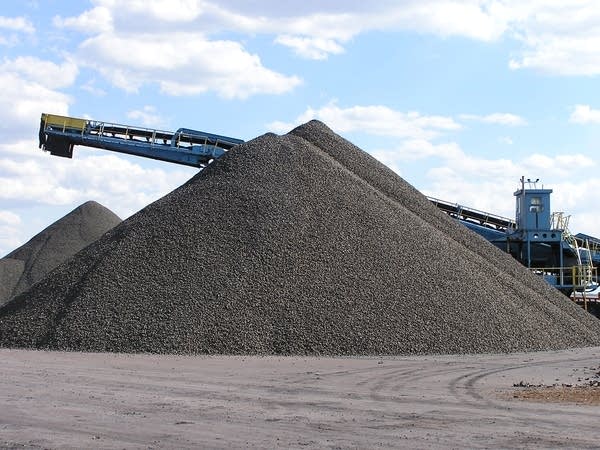Taconite tailings find second life in road construction
Go Deeper.
Create an account or log in to save stories.
Like this?
Thanks for liking this story! We have added it to a list of your favorite stories.

Minnesota has long shipped taconite pellets to steel-makers outside the state. Now there may be a market for the rock left over from the mining process.
Larry Zanko, a researcher at the University of Minnesota-Duluth, says the leftover rock, or tailings, from Minnesota's taconite mines is an ideal material for road construction.
"In this case, the taconite rock that we're looking at here; it's about as hard as any aggregate that's out there in the market right now," Zanko said. "In fact, it's probably the hardest material that could be used for roadbuilding."

Zanko says that could save the public money in areas like Chicago, where the available aggregate material is soft rock such as limestone and dolomite. Roads built with hard aggregate are safer and last longer.
Turn Up Your Support
MPR News helps you turn down the noise and build shared understanding. Turn up your support for this public resource and keep trusted journalism accessible to all.
Taconite has been tried in several Minnesota road projects. State transportation officials say it works well, but it hasn't caught on much beyond the Iron Range because of shipping costs. But shipping the material by barge can cut those costs dramatically, making Great Lakes cities like Chicago a promising market.
"In some sense, getting it on the water, on the Great Lakes is more cost effective than trying to get it into the Twin Cities metro," Zanko said.
Rail lines have long connected the mines directly to Duluth, its docks, and Great Lakes ships.

"All of the infrastructure; all of the transportation network for handling huge amounts of material, it's in place, Zanko said. "And you have access to the Great Lakes, with large vessels that can haul a lot of material."
Mike McCoshen, president of Duluth's Hallett Dock Company, is all smiles as an odd looking pair of vessels eases up to the pier. A sea-going tug called Undaunted has arrived with a ship-sized barge, ready to haul 5,000 tons of taconite tailings to the Windy City.
McCoshen says it's a welcome business at Hallett, where things have been a little slow lately.
"Over 50 percent of what we do is tied to the steel industry," he said. "So, this comes at a great time."
Crushed taconite does, however, come with a public relations problem: asbestos-like fibers. The tiny fibers in some taconite tailings are blamed by some miners for health problems, and the presence of fibers closed the Reserve Mining operation in the 1970s.

But John Bray, with the Minnesota DOT in Duluth, says the taconite used in roads comes from an area that is fiber free, thanks to an order from then-Gov. Wendell Anderson.
"It prohibits the use of East Range taconite tailings for any public purpose," Bray said. "But you are allowed to use West Range taconite tailings."
In fact, Larry Zanko says this taconite, coming from the central Iron Range, was checked and found fiber free. After all, the project is intended to help people, not hurt them, and Zanko says the taconite can makes roads safer, and save lives.
"By incorporating a material that we know the testing work has been done that shows is has superior friction characteristics," he said. "So, not only do you have a more durable pavement, you have something that's safer. So, we think that's important."




